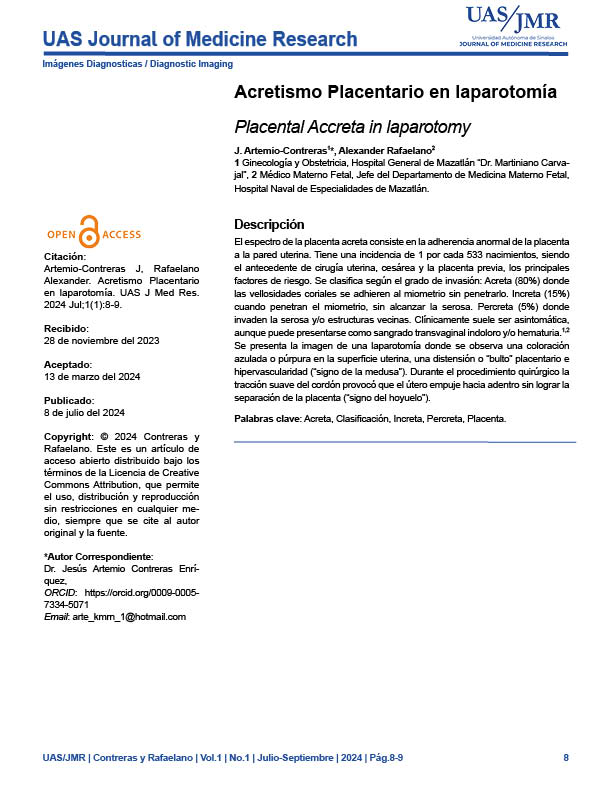Placental Accreta in laparotomy
Keywords:
Placental accretaAbstract
The spectrum of placenta accreta consists of abnormal adherence of the placenta to the uterine wall. It has an incidence of 1 in every 533 births, with a history of uterine surgery, cesarean section and placenta previa being the main risk factors. It is classified according to the degree of invasion: Accreta (80%) where the chorionic villi adhere to the myometrium without penetrating it. Increased (15%) when they penetrate the myometrium, without reaching the serosa. Percreta (5%) where they invade the serosa and/or neighboring structures. Clinically, it is usually asymptomatic, although it may present as painless transvaginal bleeding and/or hematuria.1,2
The image of a laparotomy is presented where a bluish or purple discoloration is observed on the uterine surface, a placental distension or “lump” and hypervascularity (“jellyfish sign”). During the surgical procedure, gentle traction on the cord caused the uterus to push inward without achieving separation from the placenta (“dimple sign”).
Downloads

Downloads
Published
Issue
Section
License
Copyright (c) 2024 UAS Journal of Medicine Research

This work is licensed under a Creative Commons Attribution-NoDerivatives 4.0 International License.

